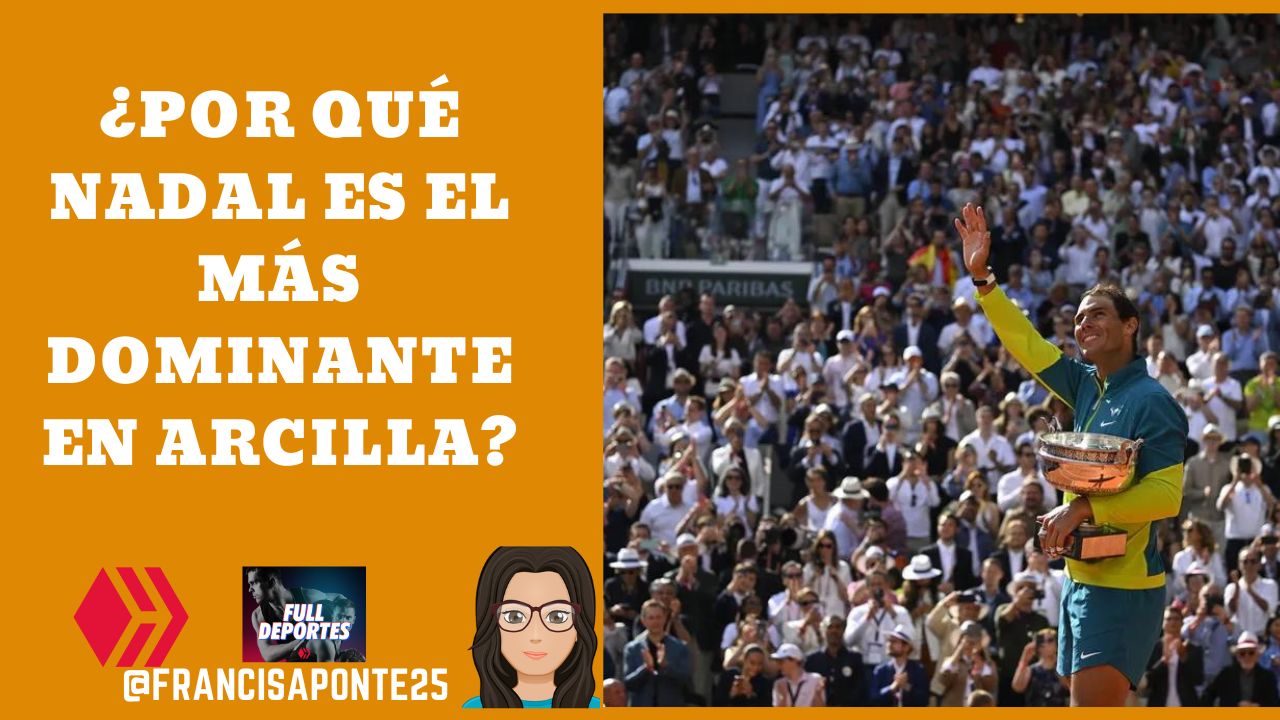
¿Por qué Nadal es el más dominante en tierra batida?

Antes de intentar responder a esta pregunta, repasemos los números de Nadal en esta superficie, especialmente en el Abierto de Francia. Nadal acumula catorce Copas de los Mosqueteros, y es el máximo ganador de este torneo en la era abierta. El segundo puesto lo ocupa el sueco Björn Borg con seis títulos. También se distancia momentáneamente de Djokovic y Federer en la carrera por el máximo ganador de torneos grandes con 22 títulos. También se ha convertido en el jugador más longevo en ganar este torneo.
Por otro lado, estos son los extraordinarios números de Nadal en Roland Garros: tiene un récord de 112 partidos ganados y sólo 3 perdidos; otro récord de 14 finales ganadas, y cero perdidas; ha perdido solo seis sets en estas 14 finales; de estos catorce títulos ganados, cuatro los ha ganado sin ceder un set en todo el torneo. Nunca ha jugado una final a cinco sets.
https://twitter.com/ATPMediaInfo/status/1533481360018526209?ref_src=twsrc%5Etfw%7Ctwcamp%5Etweetembed%7Ctwterm%5E1533481360018526209%7Ctwgr%5E%7Ctwcon%5Es1_&ref_url=https%3A%2F%2Fwww.firstpost.com%2Fsports%2Ffrench-open-2022-rafael-nadal-becomes-oldest-roland-garros-champion-other-stats-10762481.html
Pero, ¿cómo ganó este campeonato, y especialmente esta edición, cuando aparentemente tenía todas las probabilidades en contra? ¿Cómo ganó a esta edad ( 36 años, y recordemos que parte de la prensa y algunos aficionados ya le jubilan desde hace años), con muchas dudas sobre su estado físico (una dolencia en uno de sus pies) y sin una gran preparación previa, ni título en la temporada de tierra batida? ¿Por qué venció con tanta facilidad al noruego Casper Ruud, número 8 del ranking mundial y uno de los mejores jugadores de la superficie en la actualidad ( Casper tiene 8 títulos ATP, todos ellos logrados jugando en arcilla)? ¿Cómo se mantiene en el juego después de sets perdidos y malas actuaciones, como cuando jugó contra Felix Auger-Aliassime, Novak Djokovic y con el propio Alexander Zverev? ¿Qué le hace ser "casi" imbatible en cinco sets en tierra batida?
En primer lugar, y es obvio que gana porque domina la arcilla al máximo. Nadal ha crecido y jugado toda su vida en este tipo de superficie, por lo que le resulta natural y fácil moverse en ella. Las pistas de tierra batida son pistas lentas. Las mismas son perfectas para los tenistas que juegan en el fondo de la pista y para los que tienen unas características atléticas admirables. En las pistas lentas, los rebotes de la pelota tienden a ser más altos, por lo que el jugador tiene más tiempo para llegar a la bola y pensar su tiro y golpe. Son pistas en las que los peloteos son más largos y en las que el saque no juega un papel tan importante en el juego.
Nadal, por su parte, se siente muy cómodo jugando en la línea de fondo y defendiendo. Tiene una capacidad física envidiable que le permite moverse de lado a lado de la pista y llegar a pelotas inimaginables. Asimismo, tiene una derecha y un revés muy fuertes que le permiten golpear tiros potentes ganadores desde el fondo de la pista. La potencia con la que Nadal golpea la pelota hace que ésta pique alto y tenga mucho efecto. Este tiro suele ser indefendible para los oponentes, al menos, incómodo para muchos de ellos.
Al ser una pista lenta, hay más golpeos de pelotas y, por tanto, los puntos son más largos. Nadal disfruta y aprovecha esto para desplegar su juego de peloteos y largos rallies. Lo domina a la perfección hasta el punto de frustrar, dominar y cansar a sus rivales. Es bien sabido que su estrategia de juego consiste en jugar al peloteo largo, golpeando la bola con fuerza y buscando descolocar o hacer errar al rival para conseguir el punto ganador.
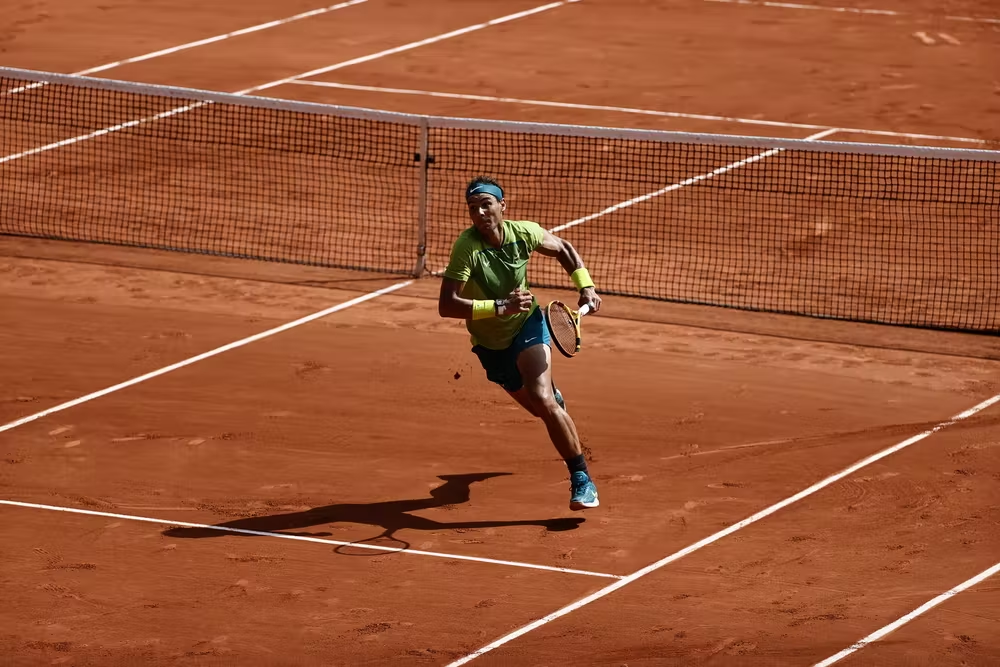
No pierde su temperamento tan fácilmente y esto le permite volver al juego rápidamente. Por eso prefiere los partidos a cinco sets, ya que tiene más tiempo para alargar los juegos y corregir sus errores. También hay que señalar que con el tiempo Nadal ha mejorado su saque, su juego en la red y su volea.
Por último, Nadal tiene lo que nadie más tiene en Roland Garros: números extraordinarios y experiencia ganadora en este torneo. Por eso, incluso antes de entrar en las pistas, tiene ventaja sobre sus rivales. Sus estadísticas son aterradoras para cualquiera que se enfrente a él, y muchos carecen de la fortaleza mental para luchar contra eso. Sólo los jugadores con talento como Djokovic, que es otro con una fuerza mental y físicamente admirable, puede darle batalla en esta superficie y en este campeonato.
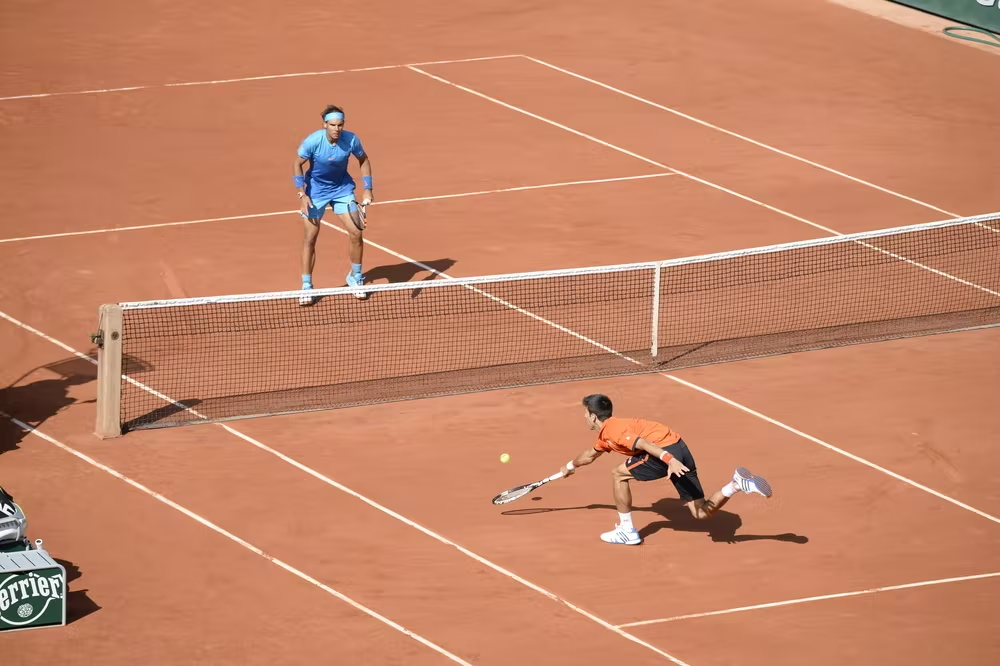
En definitiva, Nadal es el mejor jugador de tierra batida de la historia. Sus títulos en esta superficie lo certifican. Puede que no sea el jugador que más títulos de tenis gane (este renglón se la llevará Djokovic, por ser más joven y por ser mejor jugador en superficies rápidas), pero Nadal ha escrito la página de la historia como el tenista más ganador y el "casi" imbatible en pistas lentas hasta ahora.
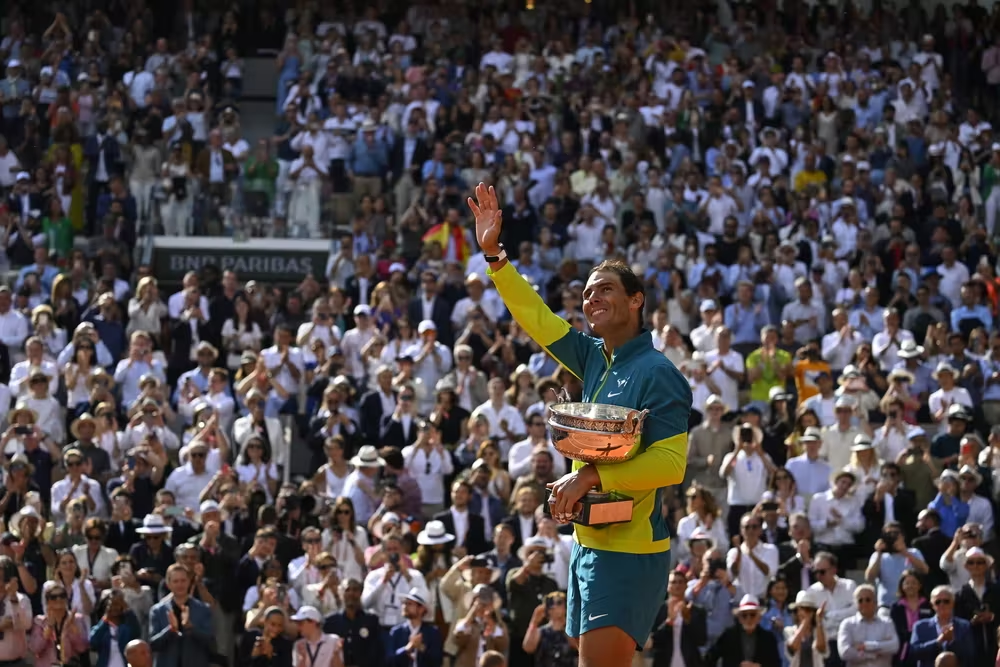
Sólo podemos preguntarnos si el español será capaz de ganar su 15º título en el Abierto de Francia, o si ganará otros títulos para añadirlos a sus 92 trofeos ganados. Sólo nos queda esperar que continúe y que nos siga regalando emociones a sus seguidores antes de una despedida definitiva.

English
Why is Nadal the most dominant player on clay?
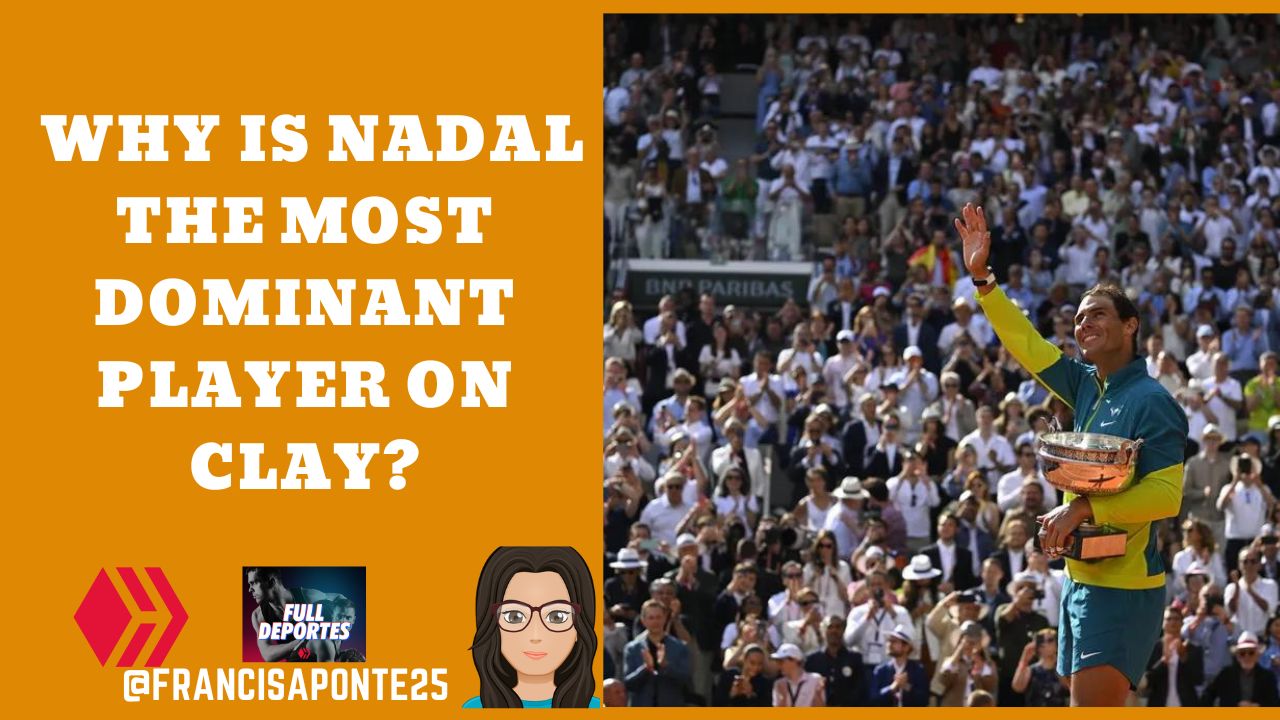 It is impressive to see how elite athletes take their physique to unsuspected limits and thus manage to become great legends in their disciplines. They are extraordinary because they always manage to overcome extreme fatigue, pain and adverse situations in the game, when it seems impossible to do so. One of these super athletes is Rafael Nadal, who yesterday won his 14th Roland Garros title. With this triumph, which makes him the greatest winner of major titles (22) in men's professional tennis, Nadal reaffirms that he is the best tennis player in history on this surface. But why is Nadal such a dominant player on this surface, even if he plays injured, he can beat younger, more talented and physically better players than him?
It is impressive to see how elite athletes take their physique to unsuspected limits and thus manage to become great legends in their disciplines. They are extraordinary because they always manage to overcome extreme fatigue, pain and adverse situations in the game, when it seems impossible to do so. One of these super athletes is Rafael Nadal, who yesterday won his 14th Roland Garros title. With this triumph, which makes him the greatest winner of major titles (22) in men's professional tennis, Nadal reaffirms that he is the best tennis player in history on this surface. But why is Nadal such a dominant player on this surface, even if he plays injured, he can beat younger, more talented and physically better players than him?

Before attempting to answer this question, let's review Nadal's numbers on this surface, especially at the French Open. Nadal accumulates fourteen Musketeers Cups, being the maximum winner of this tournament in the open era. The second place is occupied by the Swede Björn Borg with six titles. He also momentarily distances himself from Djokovic and Federer in the race for the top major tournament winner with 22 titles. He has also become the oldest player to win this tournament .
https://twitter.com/ATPMediaInfo/status/1533481360018526209
But how did he win this championship, and especially this edition, when he apparently had the odds stacked against him? How did he win at this age (remember that part of the press and some fans have already retired him for years), with many doubts about his physical condition (an injured feet) and without a great previous preparation or title in the clay court season? Why did he beat so easily the Norwegian Casper Ruud, number 8 in the world ranking and one of the best players on the surface today (he has 8 ATP titles, all of them achieved playing on clay)? How does he stay in the game after lost sets and bad performances, like he did when he played against Felix Auger-Aliassime, Novak Djokovic and Alexander Zverev? What makes him "almost" unbeatable in five sets on clay?
First of all, and it is obvious that he wins because he dominates the clay to the maximum. Nadal has grown up and played all his life on this type of surface, so it is natural and easy for him to move on it. Clay courts are slow courts, perfect for tennis players who play at the back of the court and for those with admirable athletic characteristics. On slow courts, the bounces of the ball tend to be higher, so the player has more time to get to the ball and think about his shot and stroke. They are courts where rallies are longer and where the serve does not play such an important role in the game.
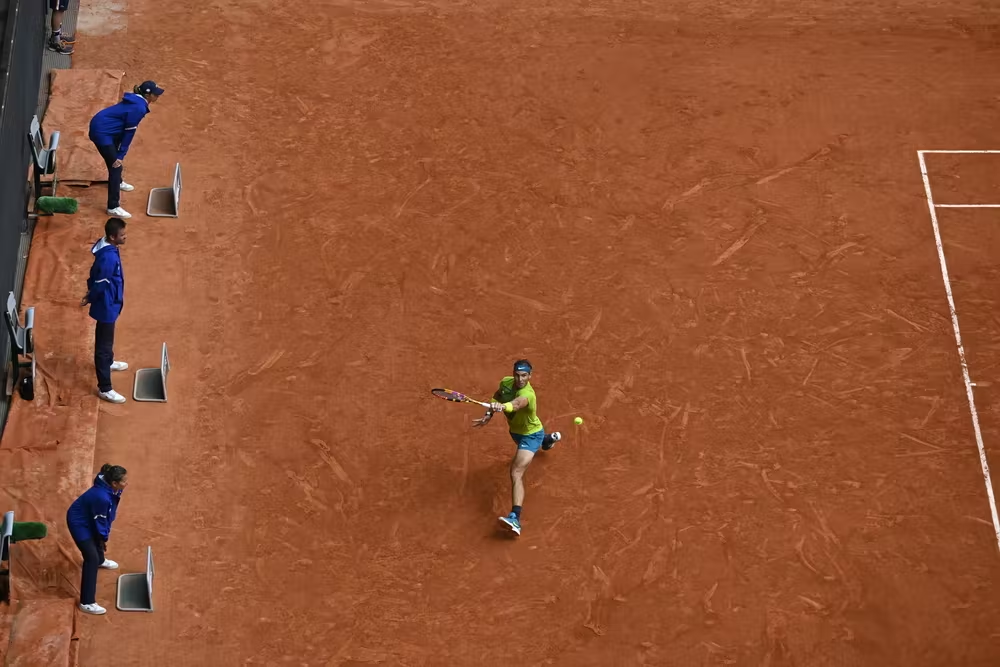
Nadal, on the other hand, feels very comfortable playing on the baseline and defending. He has an admirable physical capacity that allows him to move from side to side of the court and reach unimaginable balls. He also has a very strong forehand and backhand that allows him to hit powerful winners from the back of the court. Nadal's shots are powerful and tend to hit the clay with a high bounce and a lot of spin. This shot is usually indefensible to opponents, at the very least, uncomfortable so it is often unsettled.
Being a slow court, there are more rallies and, therefore, the points are longer. Nadal enjoys and takes advantage of this to deploy his game of rallies and big rallies. He dominates it to perfection to the point of frustrating, dominating and tiring his rivals. It is well known that his game strategy consists of favoring the long rally game, hitting the ball with force looking to dislocate or make the opponent miss to get the winning point.
